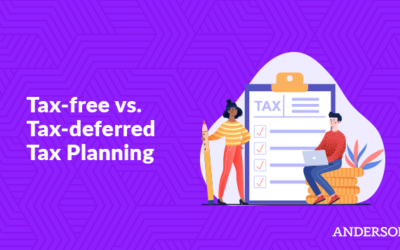Updated September 30, 2021
They say only two things in life are certain: death and taxes. The irony is that while most people accept the eventuality of death, they’ll do whatever they can to avoid it. At same time, people will lament how much they pay in taxes while doing very little to save money on taxes. The good news is that there are actually plenty of legal ways to pay less taxes.
How to Pay Less Taxes (Legally)
- Contribute to a Pre-Tax Retirement Account
- File Your Taxes Correctly
- Pay Yourself a Salary
- Go Back to School
- Deduct Expenses
- Buy Real Estate
- Start a Family
- Donate
Taxes are leveraged by the government to fund public expenditures, like paved roads, the military, and fire departments. In the United States, there are both federal taxes and state taxes. Federal taxes mainly go towards funding national public benefits, such as Medicaid and Medicare, Social Security, and military defense. State taxes go towards local services like education, transportation, parks, and police.
You might be surprised to learn that taxes have been around for thousands of years, even going back to ancient Egypt. During these times, many societies were largely agricultural, so taxes involved a share of the harvest or a few animals from the flock. As societies turned toward using currency to facilitate the exchange of goods and services, coins became the preferred means of taxation.
Today, taxes in America are mainly income taxes and property taxes. A payroll tax is paid by corporations, while sales taxes are paid by consumers. One-off taxes, like a capital gains tax, estate tax, or inheritance tax, are paid after monetary events like an investment profit or transfer of property.
A driving force in American politics is whether taxes should be higher to fund more public programs, or if they should be lower with more privatized options. No matter where the debate stands in terms of tax cuts or tax increases, the wealthiest members of society know how to use legal tax strategies to their advantage.
Free Strategy Session with an Anderson Advisor
Receive a detailed risk assessment to assist in lowering problem areas that could wipe out all of your assets with one wrong move. Speak with an Anderson Professional Advisor to get your FREE Strategy Session. Limited-Time offer: FREE (a $750 value.)
How to Pay Less Taxes (Legally)
Contribute to a Pre-Tax Retirement Account
There’s an easy way to lower your taxable income and save for retirement at the same time: make regular contributions to your 401(k), 403(b), 457 Plan, or even a Roth IRA. The more you contribute, the more you lower your adjusted gross income. Your adjusted gross income is the amount that is subject to taxation.
The money you put into these tax deferred accounts won’t become taxable until you hit 70.5 years of age or whenever you begin making withdrawals; whichever comes first. These types of retirement accounts are great tax free investments for building your wealth and preparing for old age. Everybody should make this investment a standard part of their retirement plan.
Remember, some types of retirement accounts do have a limit on how much you can contribute each year. A traditional Roth IRA has an annual contribution limit of $6,000 ($7,000 for individuals over age 50). That said, you should consider saving to several different retirement accounts.
If you work for a company that offers matching contributions, make sure you are taking advantage of that to the maximum benefit.
File Your Taxes Correctly
You might think this one goes without saying, but you’d be surprised how many people don’t take advantage of the deductions and filing statuses available to them. Single, married filing jointly, married filing separately, and head of household are all options. The head of household option can be particularly useful for an unmarried taxpayer who pay for more than half the living expenses of a home they share with another person, such as a partner, parent, or children.
If you’re unsure which filing status would give you the biggest tax break and/or tax refund, you can calculate two tax forms at the same time (electronically, for instance) and see which one yields a better benefit before submitting it to the IRS. You can also consult with a competent tax professional to make sure you are taking full advantage of the tax code and tax laws that will lower your tax liability.
Pay Yourself a Salary
If you’re self-employed, you can create your own company in the format of a C-corporation, add yourself to the payroll, and pay yourself a salary that puts you in a lower tax bracket.
This is especially advantageous for individuals whose income would normally put them in a tax bracket above the current flat corporate tax rate of 21%. This strategy does require some competent legal counsel, and its effectiveness can change depending on political forces.
In recent years, there has been some discussion of a wealth tax, which provides more incentive for a taxpayer to structure the majority of their assets under a business to avoid potentially punitive tax rates. Rest assured that even should such a wealth tax come to fruition, there will always be ways to pay less taxes.
Go Back to School
A number of educational expenses qualify for tax breaks. This includes student loans, which can provide a tax deduction of up to $2,500 per tax return. If you haven’t obtained a four-year degree, the American Opportunity Tax Credit (AOTC) will give you a dollar-for-dollar tax credit on your spending up to $2,000, and then 25 percent after that up to $2,500.
The AOTC is applicable if you, your spouse, or dependents are enrolled in the first four years of post-secondary education, as long as your income is less than $80,000. If you or your dependents have already completed an undergraduate degree but are still attending school, the Lifetime Learning Credit can still provide you with a $2,000 maximum tax credit benefit.
Of course, if you have a dependent in college and file your taxes jointly with a spouse, you can claim college tuition tax deductions. The maximum amounts will vary with your income.
Deduct Expenses
If you’re self-employed or need to leverage personal resources for your employment, you should start tallying those expenses for a tax deduction. This can include everything from travel costs, such as airfare and gas, to supplies, like a computer and stationery.
If you run a retail business, you can deduct the cost of inventory. If you run a consulting business, you can deduct lunch meeting expenses. It’s a good idea to schedule an appointment with a professional accountant to determine the best course of action for tallying expenses and subtracting them from your gross income to decrease your tax burden.
Each and every expense can go a long way toward itemized deductions that reduce your estimated tax payments within the metes and bounds of tax law and the tax code. One easy way to do this is to make business purchases using a separate credit card. This ensures that the expenses are automatically itemized on your bill and can be easily tallied for your tax return.
Buy Real Estate
Mortgage interest and property taxes can be deducted as expenses from your taxable income to reduce your income tax. This is a good reason to pay your property taxes early, so when you file your income taxes you can deduct them accordingly.
There are other more complex strategies for using real estate to lower your tax burden. This includes factoring in depreciation, especially if you invest in commercial real estate. If real estate is part of your business or income, you can also0 itemize maintenance and upkeep as a business expense.
If you are involved in commercial real estate, or even residential real estate (in most states, that means up to four units on one property), rental property tax deductions can lower your tax liability.
Start a Family
Tax savings might not be your main reason for starting a family, but the change in filing status will certainly become a benefit you appreciate.
A child care tax credit can help reduce your estimated tax payments if you have childcare expenses for school-aged dependents. Though the amounts and percentages change every so often, as of 2020 you can claim a $2,000 tax credit per qualifying child.
If you and your spouse are not quite ready to have children, you can still take advantage of family tax deductions by filing jointly as a married couple. It will give you a larger standard deduction on your taxes. As of 2019, a single taxpayer could claim a standard deduction of up to $12,000, while a jointly filing couple could claim up to $24,000.
Again, it might not be the most romantic reason to contemplate family planning, but the tax benefit of letting the IRS know you’ve tied the knot is not a bad way to lower your taxes and possibly score a nice tax refund.
Donate
Sometimes you have to give in order to receive, and if you give charitable donations, you can receive a wonderful tax break.
The IRS allows you to deduct charitable donations from your income (provided the donation is to a nonprofit organization recognized by the IRS), so make sure you document your donations throughout the year.
Cash donations under $250 require a bank record (like a statement) showing the name of the organization, date, and amount. Cash donations more than $250 require a written statement from the organization stating that you received no goods or services in return for your donation.
Quid pro quo donations, such as a ticket to a charity dinner, require a letter from the organization that establishes the market value of what you received and lists the difference as your contribution. Vehicle donations will also require additional paperwork, but the organization collecting your vehicle will be familiar with this and make recommendations accordingly.
Lower Your Tax Liability Today!
Tax planning is not an area that most people are familiar with, but as we’ve seen above there are a number of simple strategies that can help you lower your end-of-year tax burden.
A competent tax advisor can help you come up with plenty of legal methods for reducing your gross income or claiming deductions on your tax return, which means the money you save on taxes can go toward funding personal projects.
Whether you’re interested in traveling the world, building a lake home, or creating a charitable foundation of your own, paying less taxes can be a step toward making those dreams come true.
Bonus Video
3 Steps to Create an Invisible Investor Strategy















